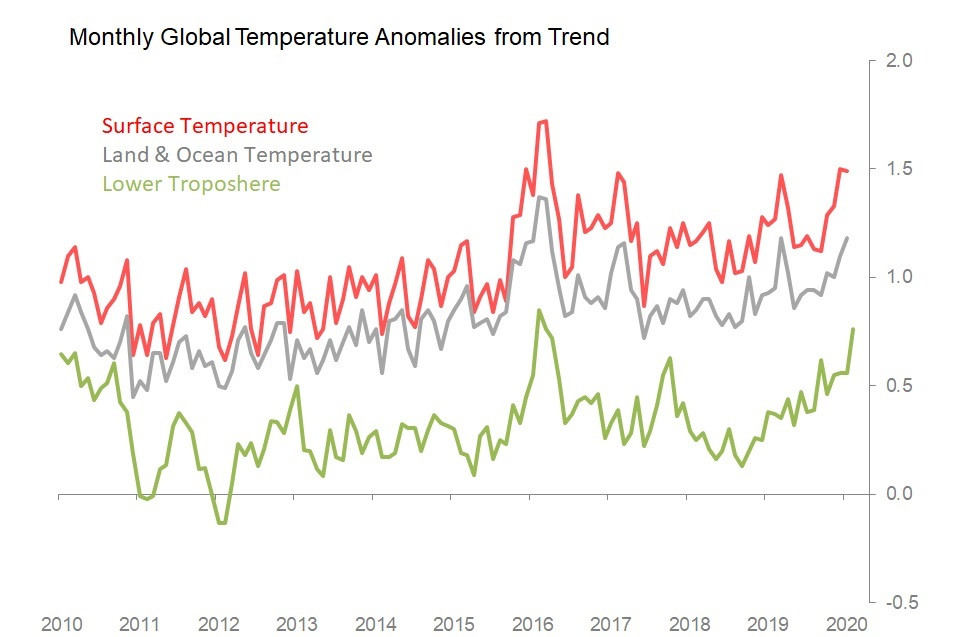Mar 17•3 min read
Climate Muscle Memory Gym - Feb 2020
Yes, there's no shortage of things to be alarmed about, but despite that, if I'm to put on some climate muscle memory, it's important I get back in the gym and work that data.
The data is now in for February, and it tells us it was a hot hot month, with the rise seen in much of 2019 accelerating in the first two months of 2020. The three measurements I look at are all telling the same story:
The Goddard surface temperature anomaly essentially maintained the spike seen in January, at +1.49 degrees;
The Land and Ocean series showed the anomaly rising 0.08 degrees to 1.18 degrees, the noint-hottest since the March 2016 spike;
Spencer's satellite-generated lower troposphere series is perhas the most dramatic of all, with the anomaly rising 0.2 degrees to 0.76 degrees - that's the highest since Feb 2016.
The data suggests that we're breaking out above the the post-2016 spike plateau.

And the gases? The samples from the Mauna Loa show no progress on CO2 or methane, but continuing slow progress on nitrous oxide and sulphur hexaflouride.
Starting with CO2, there is nothing much to report: concentrations rose 0.2% mom to 414.1 parts per million, which was almost exactly in line with seasonal historic trends. That trend continues to show a very steady growth of approximately 0.6%-0.7% a year. On a 12m basis, the rise in concentrations is almost exactly on-trend.
Things are probably a little more depressing for methane. Although Nov's concentrations were unchanged mom at 1,877 parts per billion (latest data available), and this was up 0.6% yoy, the trend rise is still accelerating, and the 12m results show a 0.7SD break above that trend. This continues the accelerating rise in methane concentrations which has been observed since end-2017.
There is better news, however, from the two less abundant greenhouse gases: nitrous oxide and sulphur hexaflouride. In both cases, the trend rise in concentrations is slowing, and the evidence of the last year is that concentrations are continuing to push down that trend further. The latest data shows N2O concentrations rising only 0.2% yoy, with a 12m break under trend of 0.2SDs.
Sulpher hexaflouride is the worst of the greenhouse gases that are traced, with a warming potential something like 22k-23k worse than that of CO2: ie, it's a real nasty. The good news comes in three parts. First, it remains only a trace gas, with February's sample showing only 10.07 parts per trillion. Second, the trend rise in its concentrations is slowing - it rose 3.3% yoy in February, which was the lowest since the sampling started in 1998. Third, the samples over the last 12 months tells us concentrations are slowing even faster than that slowing trend - in the 6m to February, concentrations rose 0.4SDs below the trend rate.
